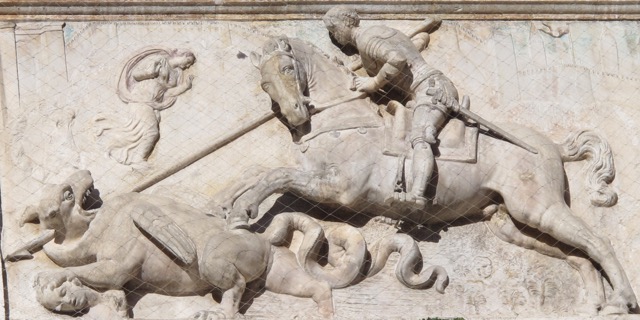The MacLean lecture from 2018, delivered in New York by Stephen Guy-Bray as the author was unable to leave London due to the ‘bomb cyclone’, is designed to be provocative and to encourage debate about crucial but (relatively) neglected aspects of Spenser’s work. The Fowre Hymnes have their champions and their detractors and it might be good to move beyond entrenched positions and open out discussion to see if we can understand the nature of these strange, elusive and mysterious poems. The lecture asks whether the Hymnes express Spenser’s mature vision of his art as some have claimed, and, if so, what is the nature of that vision? If not, can they be written off as juvenilia as the preface suggests they are? Most significantly, what is actually at stake in how we read them and what might it tell us about how we have been reading Spenser ...
Read more »Rachel Eisendrath raises the possibility that Queen Elizabeth’s motto, ‘video et taceo’ (‘I see and keep silent’), describes not only the powerfully coiled comportment of the queen – but also the taut presence of aesthetic objects. Focusing on the first half of Edmund Spenser’s 1595 Amoretti, Eisendrath explores the narrator’s process of interpreting the silence of the woman at the center of these sonnets (Elizabeth Boyle, Spenser’s future wife) as akin to the reader’s process of interpreting the poems, or by extension of interpreting artworks in general. What is at stake in this essay is the role of imagination in interpretation, and the unstable dynamic between speech and silence. Read more…

Bas relief from the exterior of the Scuola San Giorgio degli Schiavoni in Venice. Photo courtesy of Roger Kuin.
- Alaistair Fowler, The Mind of the Book: Pictorial Title Pages —
- Andrew Hiscock and Helen Wilcox, eds., The Oxford Handbook of Early Modern English Literature and Religion —
- Koert van der Horst, ed., Great Books on Horsemanship: Bibliotheca Hippologica Johan Dejager —
- Jason Lawrence, Tasso's Art and Afterlives —
- Constance M. Furey, Poetic Relations: Intimacy and Faith in the English Renaissance —
- Andrew Hadfield, Lying in Early Modern English Culture: From the Oath of Supremacy to the Oath of Allegiance —
- Stephen Greenblatt, The Rise and Fall of Adam and Eve —
- Catherine Bates, On Not Defending Poetry —
- Patricia Demers, Lady Anne Bacon: An Apology or Answer in Defence of the Church of England —
- Jeff Dolven, Senses of Style: Poetry Before Interpretation —
- Steven W. May and Alan Bryson, eds., Verse Libel in Renaissance England and Scotland, and Peter Redford, ed., The Burley Manuscript —
- Lisa Blake and Kathryn Vomero Santos, eds., Arthur Golding’s A Moral Fabletalk and Other Renaissance Fable Translations —
- Robert S. Miola, ed., George Chapman: Homer’s Iliad, and Gordon Kendal, ed., George Chapman: Homer’s Odyssey —
- Louise Hill Curth, ‘A Plaine and Easie Waie to Remedie a Horse’: Equine Medicine in Early Modern England —
- Ewan Fernie, Shakespeare For Freedom: Why the Plays Matter —
